Abstract
Clostridium botulinum 12885A spores treated with hypochlorite required added DL-calcium lactate for L-alanine germination. Lactate was the active component of calcium lactate. Equimolar concentrations of L-malate, but not of DL-propionate, could replace lactate, suggesting that the alpha-hydroxy acid structure is important. Neither lactate nor malate was an effective germinant for buffer-treated or hypochlorite-treated spores. If the L-alanine concentration was increased 100-fold (to 450 mM), the lactate germination requirement was overcome. The data suggest that the L-alanine germination sites were modified by hypochlorite so that a higher concentration of alanine was required for activity. Lactate appeared to be an activator of modified or non-hypochlorite-modified L-alanine germination sites.
Full text
PDF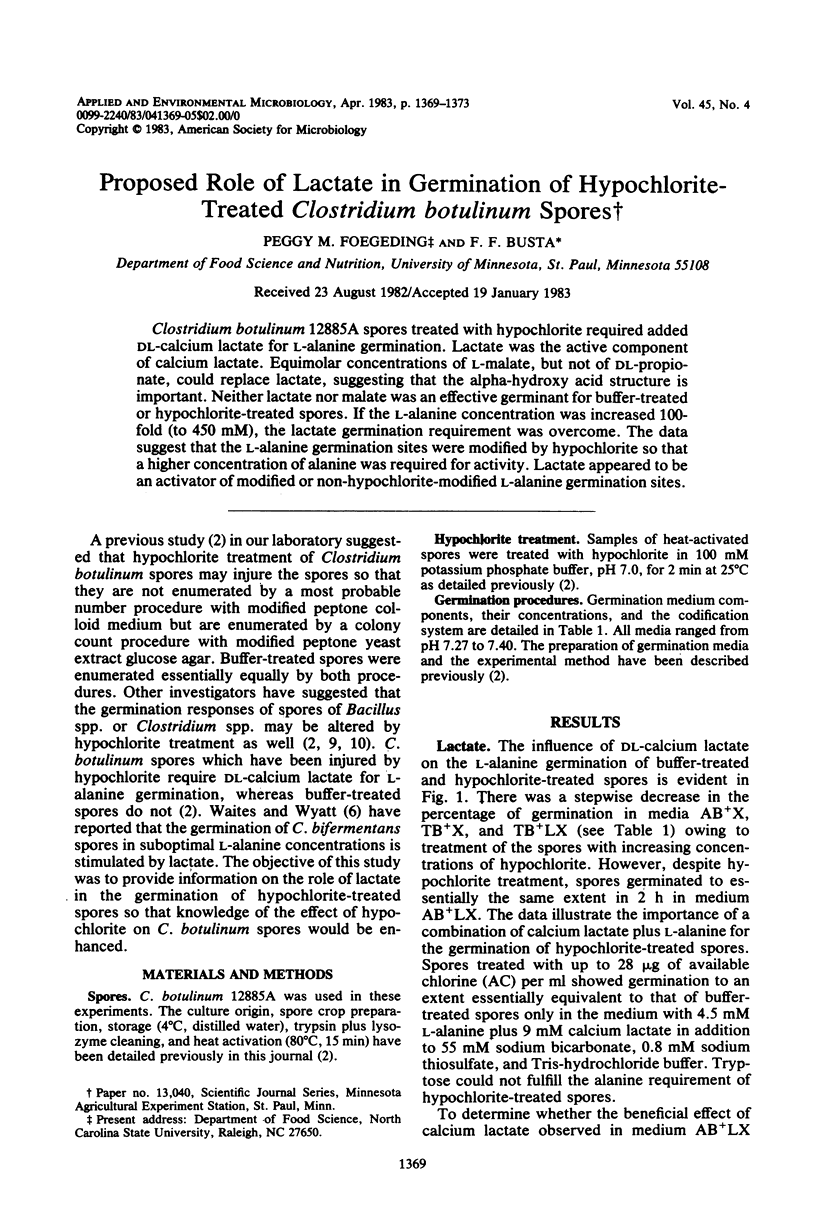
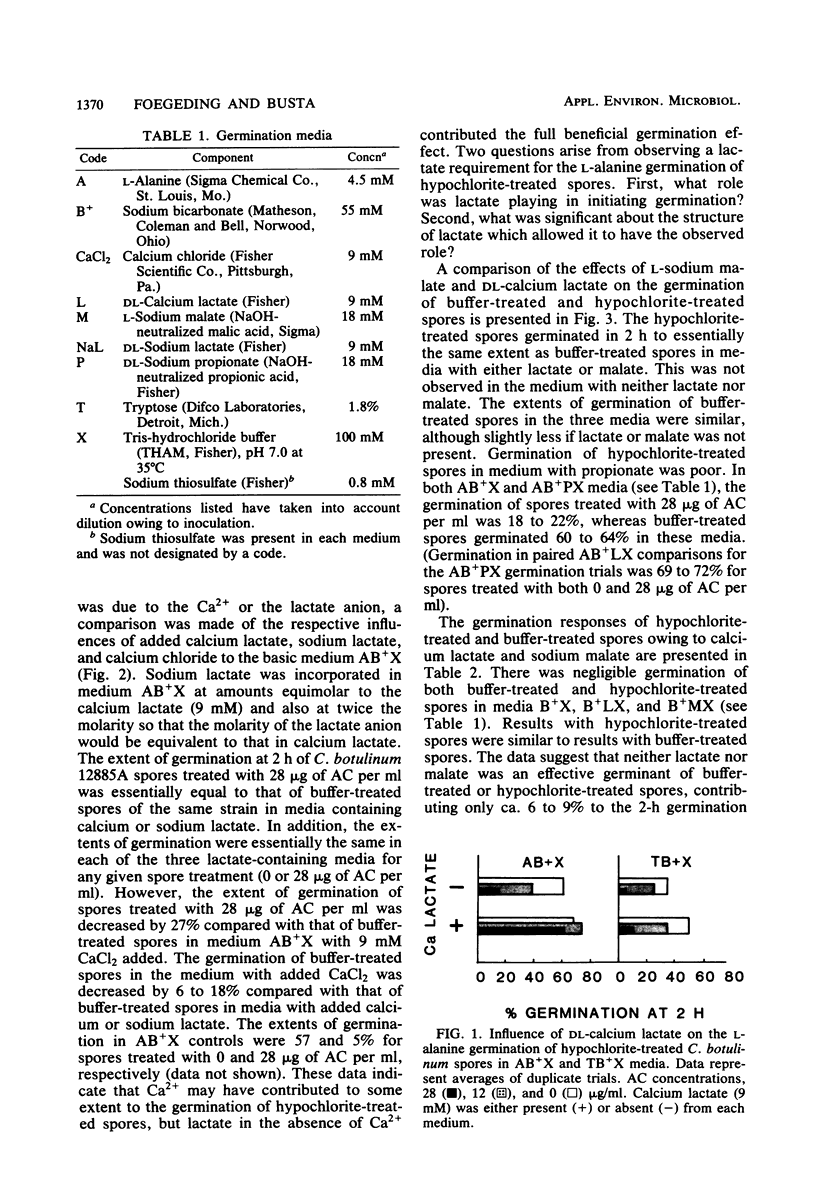
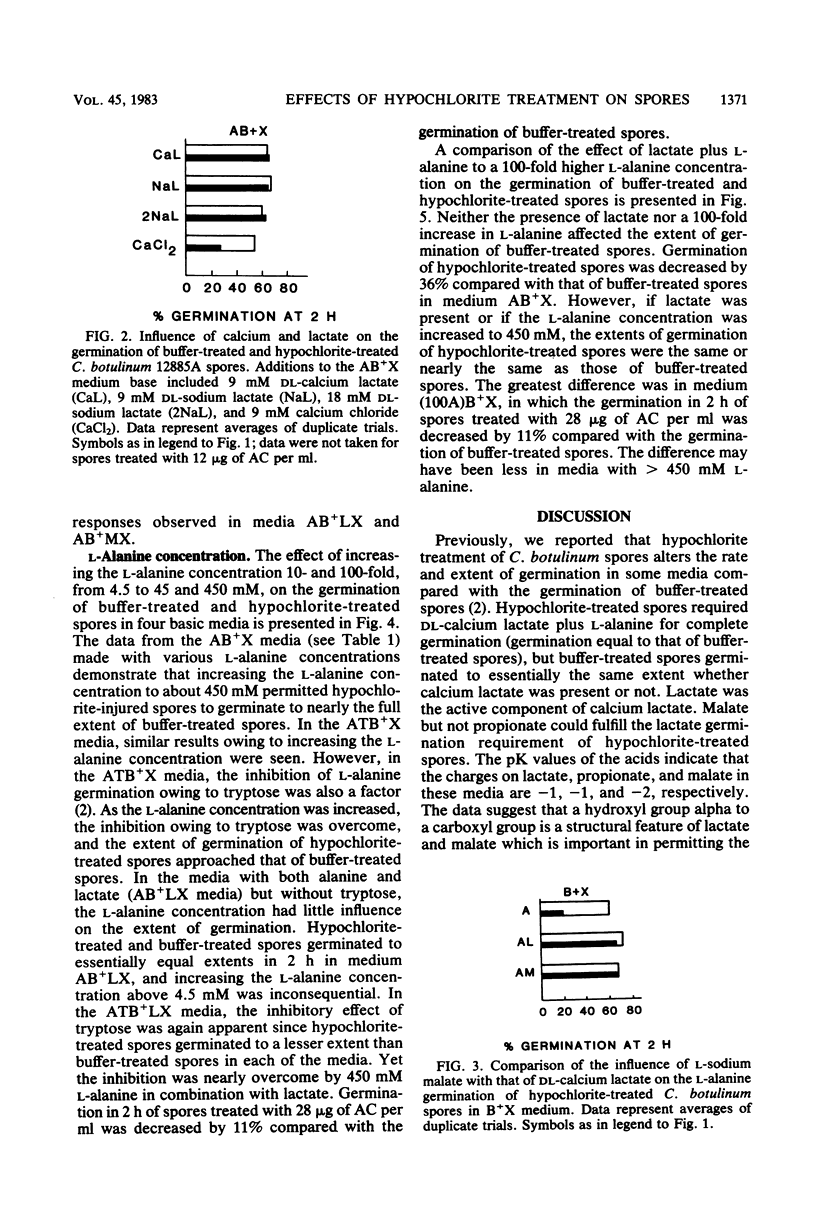
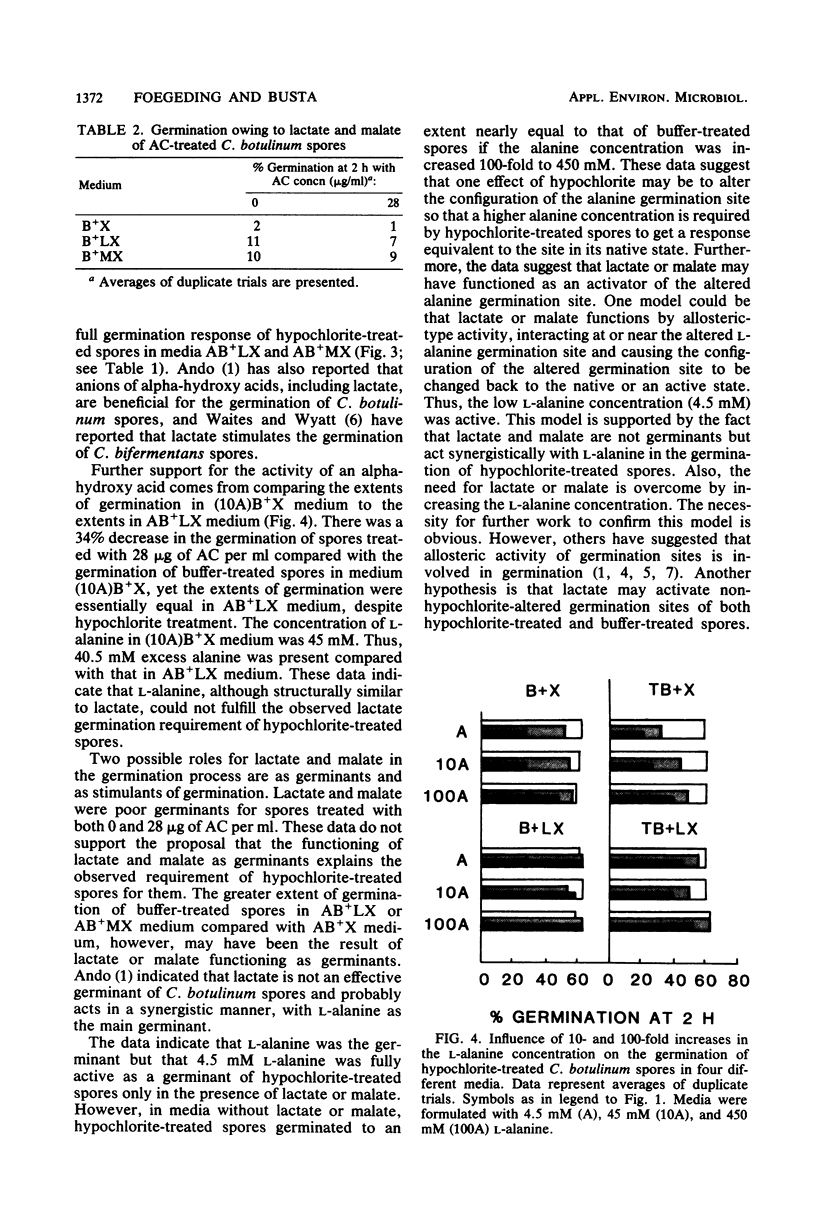
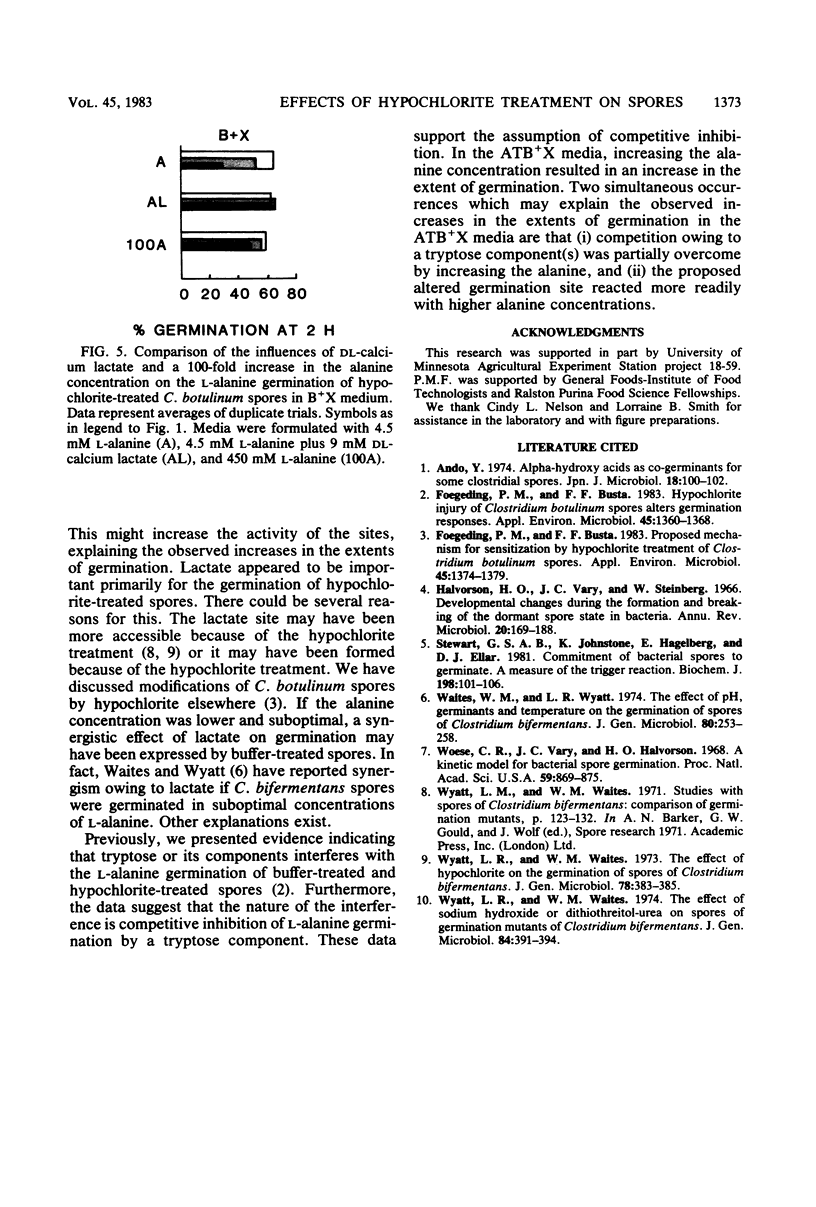
Selected References
These references are in PubMed. This may not be the complete list of references from this article.
- Ando Y. Alpha-hydroxy acids as co- germinants for some clostridial spores. Jpn J Microbiol. 1974 Jan;18(1):100–101. doi: 10.1111/j.1348-0421.1974.tb00752.x. [DOI] [PubMed] [Google Scholar]
- Foegeding P. M., Busta F. F. Hypochlorite injury of Clostridium botulinum spores alters germination responses. Appl Environ Microbiol. 1983 Apr;45(4):1360–1368. doi: 10.1128/aem.45.4.1360-1368.1983. [DOI] [PMC free article] [PubMed] [Google Scholar]
- Foegeding P. M., Busta F. F. Proposed mechanism for sensitization by hypochlorite treatment of Clostridium botulinum spores. Appl Environ Microbiol. 1983 Apr;45(4):1374–1379. doi: 10.1128/aem.45.4.1374-1379.1983. [DOI] [PMC free article] [PubMed] [Google Scholar]
- Halvorson H. O., Vary J. C., Steinberg W. Developmental changes during the formation and breaking of the dormant state in bacteria. Annu Rev Microbiol. 1966;20:169–188. doi: 10.1146/annurev.mi.20.100166.001125. [DOI] [PubMed] [Google Scholar]
- Stewart G. S., Johnstone K., Hagelberg E., Ellar D. J. Commitment of bacterial spores to germinate. A measure of the trigger reaction. Biochem J. 1981 Jul 15;198(1):101–106. doi: 10.1042/bj1980101. [DOI] [PMC free article] [PubMed] [Google Scholar]
- Waites W. M., Wyatt L. R. The effect of pH, germinants and temperature on the germination of spores of Clostridium bifermentans. J Gen Microbiol. 1974 Jan;80(1):253–258. doi: 10.1099/00221287-80-1-253. [DOI] [PubMed] [Google Scholar]
- Woese C. R., Vary J. C., Halvorson H. O. A kinetic model for bacterial spore germination. Proc Natl Acad Sci U S A. 1968 Mar;59(3):869–875. doi: 10.1073/pnas.59.3.869. [DOI] [PMC free article] [PubMed] [Google Scholar]
- Wyatt L. R., Waites W. M. The effect of hypochlorite on the germination of spores of Clostridium bifermentans. J Gen Microbiol. 1973 Oct;78(2):383–385. doi: 10.1099/00221287-78-2-383. [DOI] [PubMed] [Google Scholar]
- Wyatt L. R., Waites W. M. The effect of sodium hydroxide or dithiothreitol-urea on spores of germination mutants of Clostridium bifermentans. J Gen Microbiol. 1974 Oct;84(2):391–394. doi: 10.1099/00221287-84-2-391. [DOI] [PubMed] [Google Scholar]


